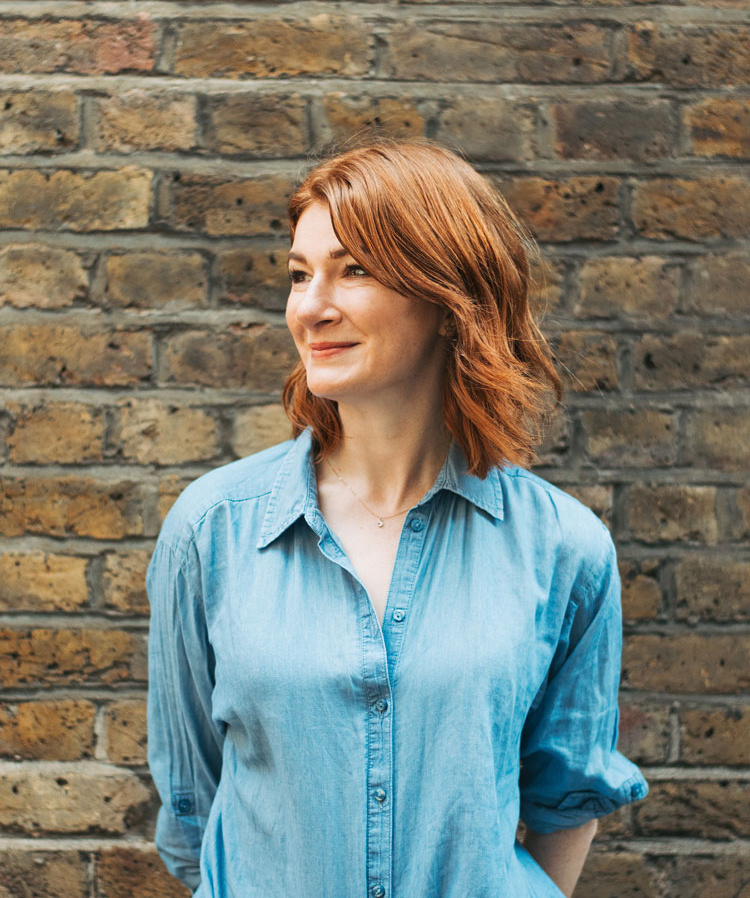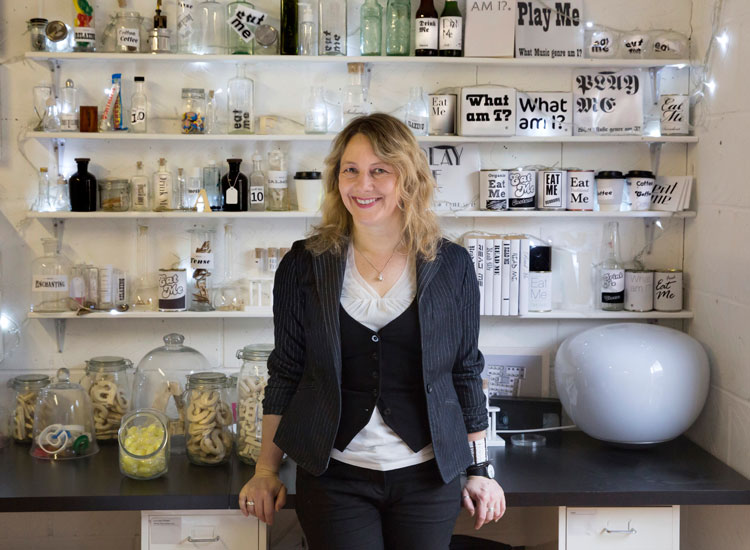From Extinction Rebellion to Virgin’s Varga girl: designers’ biggest moments of 2019
It’s been a year marked by protest and politics, which has in turn given way to a host of memorable design moments – as it wraps up, we ask designers to tell us what they’ll be remembering about 2019.

“For me, the design event of the year was undoubtedly the publication, by Unit Editions, of AZTDR™ — the first TDR™ book proper. 33 years in the making, 25 years since the ‘first’ version of the book was commissioned by Booth Clibborn Editions, and almost 20 years since the unfinished symphony of Brain Aided Design with Laurence King. Its been a journey and thanks to the encouragement, guidance and hard work of everyone involved at Unit, it’s been worth the wait. Some people may see it as a monograph, I see it as a mission statement… Next!”
– Ian Anderson – founder, the Designers’ Republic

“Instead of one big design moment, I think 2019 was a compilation of incredible design advances and that therefore makes it a big design year. 2019 showed the evolution of design to this century and the new path it has taken. From inclusive design and zero waste design to the development of sustainable materials. I think this year clearly showed how many designers have shifted their goals given the world’s current circumstances; from refugee crisis and global warming to extinction of species, over consumption and production as well as material lifecycle.
Three clear examples of this new focus are FutureCraft Loop from Adidas – a sneaker made from virgin plastic that can be recycled and remade again. Project Coelicolor from Faber Future – a dye for textiles made from the pigment of a microbe which not only reduces the use of toxic dyes in textiles but reduces significantly the water usage compared to current industrial dyeing methods. And lastly Pisces from SafetyNet – LED lights to reduce bycatch by up to 90%, increasing fishermen’s revenue by decreasing sorting time, fuel usage and more.”
– Renata Souza Luque – product designer, Thumy

“I spent a lot of time in 2019 thinking about our city streets and public spaces. Who are they built for? Who do they exclude? How do we make them more welcoming? More joyful? I see design and public art as playing a huge role in answering these questions and loved the pink seesaws Rael San Fratello inserted between the US-Mexico border. They were the perfect example of something playful and nostalgic carrying a much bigger message about human connection.
In my own work I was really excited to design a set of street furniture for South Molton Street in central London. Before this there was nowhere to sit and socialise. The idea with Walala Lounge was to create an urban open air living room for all. I deliberately designed the benches to be as unrestrictive as possible so people could lounge, sleep and rest on them as homelessness is an issue very close to my heart.”
– Camille Walala, artist and designer

“My design highlight of the year is the Extinction Rebellion logo. Just when you suspect design is going a little too mainstream or safe, logos like this come along: bold, unapologetic, unguarded in their intent. Simple and striking, it manages to convey both anger and urgency, capturing the essence of the fearful and the fearsome. Easy to replicate on signs, banners and face paint, it is the real epitome of visual protest language; a graphic design icon for the people and their planet, and for me, the ultimate sign of the times.”
– Holly Kielty – director of storytelling, Design Bridge London

“For me it’s more of a theme of change than a moment. Extinction Rebellion was only founded 13 months ago and yet its iconic logo and message are now recognised globally.
The Uninvisibility Project was founded this year. It champions women over 50 in the creative industries and campaigns for them to be more visible (and employed) since they’re the demographic that buys 47% of everything. “Asking a young woman to write a menopause ad is like asking a toddler to write a tampon campaign” says founder Jane Evans.
There’s increasing diversity of speakers at design events, although there’s still a long way to go. I spoke at the Kerning conference earlier in the year where seven out of eight speakers were women and it felt important that the organisers just promoted us all equally as ‘speakers’ instead of highlighting our gender.”
– Sarah Hyndman – graphic designer, founder, Type Tasting

“It’s been an interesting year again with such incredible work across the globe. Some of the best exhibitions at the Tate and the Royal Academy this year I couldn’t keep away. I loved BIGs Copenhill power plant topped with the ski slope in Copenhagen. The powerplant is so clean that they were able to turn its building mass into the bedrock of social life of the city. Anything that pulls communities together gets my vote.
Which moves me onto the political marches that have taken place this year. The sheer creativity of the nation’s amazing hand-made banners with such powerful and humorous messages really made me smile, and that’s a great lasting memory of 2019. Power to the people.”
– Jon Lee, creative director, 20.20

“What’s stood out to me more than ever this year is the difference that creative people and brands can make to causes and to highlight the issues of modern society. In a year that’s seen mass protests around politics and Climate Change you have to look no further than the striking Extinction Rebellion identity to see how art and creativity can be used to draw people to a cause. Artists, performers, writers all coming together in an outpouring of colour and emotion.
And then you have the departure of Virgin Atlantic’s iconic Varga Girl after 35 years – replaced with five new characters looking to fly the flag for diversity and gender balance. Whether it’s successful or not remains to be seen but it’s refreshing to see an iconic global brand looking to use its position and ambition to better reflect modern society.
Brand and design has the power to reach out – connecting people with something they can believe in, together. I suspect this is something that we’ll be seeing a lot more of as we go forward into 2020!”
– Victoria Pinnington, senior designer, True North

“In 2019 we saw a huge shift in the general public’s awareness of what had been nuanced ethical concerns with some saying we are finally in the midst of an ethical revolution. We say bring it on!
Brexit, Trump and the climate crisis has left many feeling shock, anger and hopelessness, but we welcome the arrival of mainstream activism driven by Extinction Rebellion and Greta Thunberg.
In design, everyone is rethinking materials and material use, which leads to important conversations about consumer habits and the lifecycle of products. But we also need to keep an eye on the make-up of the industry itself. We have an inclusivity problem with product and industrial design being 94.7% male and architecture 93.7% white. We launched Design Can to fight for inclusion in our industry and refuse the status quo. I’m excited to see more activism in 2020 and positive change for the future.”
– Sabine Zetteler, founder, Zetteler consultancy, Design Can

“Signifying more of a movement rather than a moment in 2019, increasing numbers of us working in design are taking concerted action to address the climate crisis. This year we saw the launch of Culture Declares Emergency, Architects Declare, along with several groups championing sustainability in the world of service design. We also saw ultra-low energy council housing scoop the RIBA Stirling Prize, just a few months after RIBA formally set out its commitment to tackle the climate emergency.
All of this marks a huge step forward. It also gives us all something to think about: in order to have a real and lasting impact, design organisations across the UK must take a holistic view of the problems we’re facing, present a hopeful vision of the future, and collaborate with others rather than work alone. At Design Council, we expect to bring even more people together from grassroots to government and use design to create places, products and services that help people live more sustainably. We want to encourage all those we are working with to put the environment, as well as people, right at the heart of design.”
– Cat Drew, chief design officer, Design Council

“Potentially a bit unconventional to be considered a design move, but I would like to highlight Instagram’s recent rollout of removing likes nudging users into a healthier relationship to social media. The removal of vanity metrics reflects societies call for authenticity and realness. For 2020 I hope to see more human-centered design with brands daring to take a stand on digital responsibility and our relationship with devices.
– Lydia Kellam, design strategist
-
Post a comment





